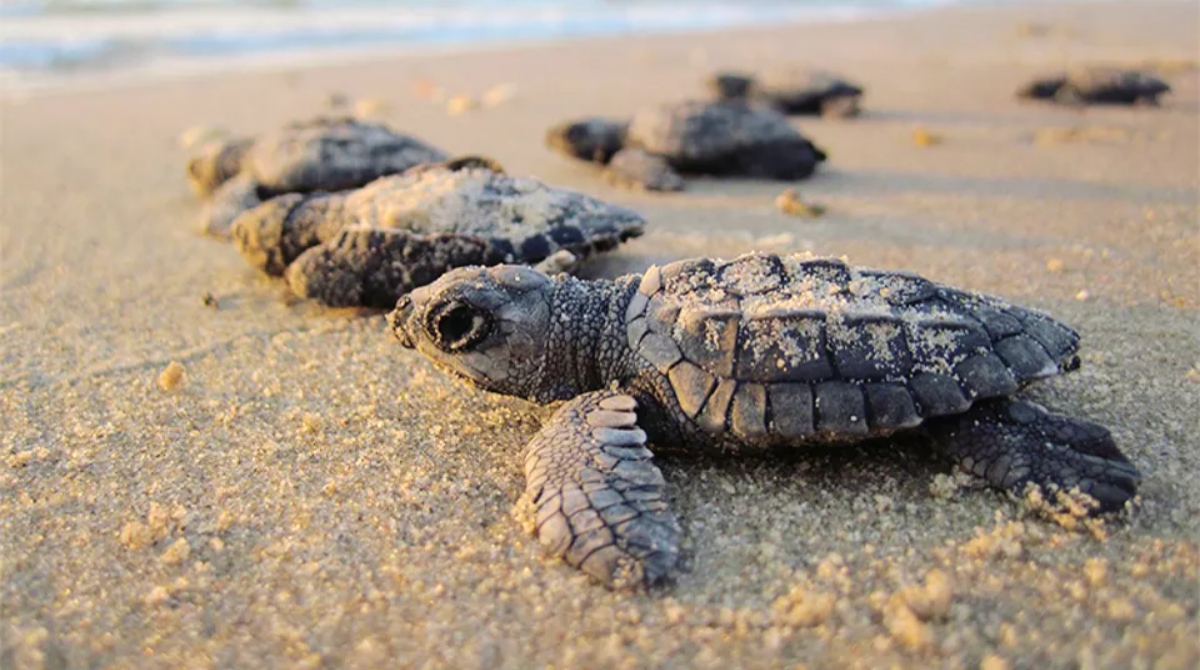The quiet Galgibaga beach in South Goa is possibly one of few hidden treasures that Goa has left. The beach is regarded as one of the three locations in Goa that form the nesting grounds of the Olive Ridley turtles, a protected species. The northern portion of this seashore is blanketed as the turtles’ nesting grounds and offers the seaside its nickname, Turtle beach.

This empty stretch of beach with its silvery sands and clusters of coconut palms is a calm and serene paradise and a poet’s delight. If you are in Goa in January and February you may be lucky enough to see the turtles nesting and hatching. Visitors are only requested not to touch or disturb the turtles so that the conservation program can continue its successful work.

The north side of the beach is still a completely protected turtle zone but there are a handful of simple shacks at the south end of the beach serving sensational fresh seafood.
Swimming at Galgibaga Beach is safe within the stipulated area. Lifeguards are available on this beach to ensure your safety. It is recommended that you don’t venture out close to the Talpona riverside as changing tides might bring in undercurrents.
During weekdays, you will hardly see a tourist around. On weekends, this beach sees some visits from locals. So, if your idea of a beach vacation is a quiet, philosophical, meditative and great beach, then Galgibaga is the perfect place in the Canacona district of South Goa. All you need is to carry your towels, umbrella, sunshade, etc. And you will have a fantastic time. Please ensure that you carry all your litter back to the city.
How to get to Galgibaga beach
This beach is located in the deep south of Goa, on the banks of the Galgibag river. It is about 56km away from Colva, which is a popular beach resort in South Goa and 54km away from Margao, the cultural capital of Goa.
When to Go To Galgibaga beach
As with most other beaches in Goa, the best time to visit is in the winter months from October to March, when the weather is pleasant and the seas are not so rough. In the summer, despite the heat, the beaches are still a great place to be. During the monsoon months, the beaches are less frequented because the seas are rough with dangerous undercurrents and inclement weather.

What to Do at Galgibaga Beach
Since Galgibaga is one of the least frequented beaches in the South of Goa, there are no beach shacks like there are on most of the other Goan beaches. However, there is a resort where one can enjoy a pleasant and peaceful stay, away from the crowds and the bustle of the rest of the state.
The beach itself is a pristine stretch of golden-brown sand, fringed with coconut palms and other trees. The seas in the area are known to be quite rough and not always safe to swim in, so caution is advised when venturing out for a dip.
The most famous aspect of Galgibaga is the nesting ground of the Olive Ridley turtles which is protected area at the northern end of the beach. The government of Goa is doing a sterling job of protecting the turtle’s habitat and nesting area at this beach and at Agonda and Morjim, the two other beaches which are frequented by the Olive Ridley turtles.


